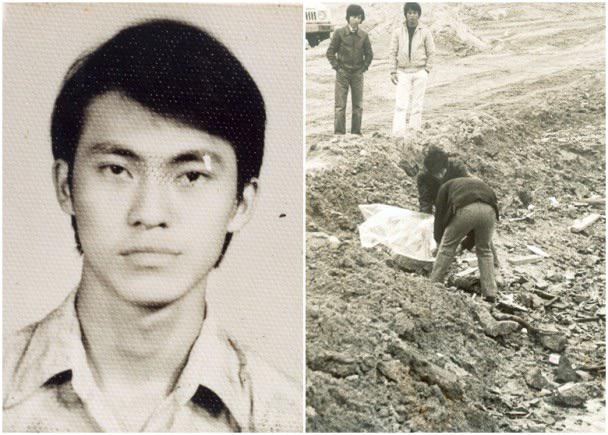

True Crime Tales
Gripping real-life stories of murder, mystery and justice. Step into the darker side of life with detailed, compelling narratives you won’t be able to put down.


LAM KOR-WAN
The Rainy Night Butcher: Unmasking Hong Kong’s Most Chilling Killer
Hong Kong, the Pearl of the Orient, a city of dazzling lights, bustling markets, and relentless ambition. In the early 1980s, it pulsed with a vibrant energy, a place where fortunes were made and dreams pursued. Yet, beneath this glittering façade, a chilling darkness began to stir, a terror that would soon earn its perpetrator a moniker that still sends shivers down the spine: the “Rainy Night Butcher.” This is the story of Lam Kor-wan, a man whose perverse fantasies plunged a city into a nightmare, and whose capture revealed a horror almost too disturbing to comprehend.
The Genesis of Darkness: A Troubled Youth
Born Lam Kwok-yue in British Hong Kong on May 22, 1955, his early life held a peculiar instability. From 1957 to 1962, while his father worked for a petroleum company in Brunei, young Lam lived with his mother, a concubine, and half-siblings in a company dormitory. This early household dynamic, a complex blend of family structures, preceded his return to Kwun Tong, Hong Kong, in December 1962. He attended elementary school, initially performing well, often ranking in the top ten. However, by 1970, his grades plummeted as his father, now running a motorcycle store, demanded his help after school, leading to frequent scoldings and a deteriorating relationship that often saw Lam driven from home.
The cracks in his psyche deepened in early 1973 when, after an argument, he was expelled from the family home. Soon after, he was arrested for threatening a woman with a knife and touching her lower body near a public toilet in Hung Hom. This incident led to 102 days of treatment at Castle Peak Hospital, after which he was discharged and temporarily renamed Lam Yau-keung. Around the age of 19, his family noted his abnormal behaviour and a disturbing interest in female flesh, culminating in him being caught peeping at his sister’s naked body outside their home’s toilet. In 1978, he obtained a cab license, officially becoming a taxi driver and changing his name to Lam Kor-wan. By 1980, he was a night-time cab driver, a profession that offered anonymity and opportunity. A year into this night shift, his mother observed a significant decline in his personal hygiene and a deepening depression, unnoticed by the wider world. In 1981, he suddenly developed a keen interest in photography, joining a club and diligently studying techniques – a hobby that would become chillingly intertwined with his crimes.
The City Unaware: A Shadow Descends
The year was 1982. The city hummed with its usual rhythm, its millions of inhabitants going about their daily lives, largely oblivious to the predator lurking in their midst. Lam Kor-wan, the unassuming taxi driver, was the last person anyone would suspect. But within him festered a grotesque obsession with anatomy, dismemberment, and a chilling desire to document his depraved acts.
His victims were chosen with a cold, calculated precision. All were women, picked up in his taxi during the late hours, often on rainy nights – a detail that would later become a macabre signature. The first victim, Chan Hon-kit, a 22-year-old nightclub dancer, vanished in February 1982 after taking a cab from Kimberley Road, Tsim Sha Tsui East, at 4:00 a.m. Lam strangled her with an electrical cord in his taxi, drove her body to his Kwun Tong apartment, and hid it under the sofa. Hours later, he used her own wallet to buy an electric saw. The next day, after his family had left, Lam stripped her body, photographed it, and meticulously dismembered it into seven pieces, recording the process in a video he chillingly titled “Serious Secrets.” Her sexual organs were placed in a plastic box and preserved in rice wine, while the rest of her body, wrapped in newspaper and plastic, was later washed down the Shing Mun River by heavy rain, eventually floating to various locations in Sha Tin District.
The Gruesome Signature: A Trail of Dismemberment
The discovery of human remains in various parts of Hong Kong sent a jolt of terror through the city. Body parts, meticulously dismembered, began appearing in plastic bags, discarded in drains, on hillsides, and even in public places. The police were baffled. The precision of the cuts suggested a chilling expertise, and the lack of a clear motive left investigators grasping at straws. Fear began to ripple through the densely populated streets. Women grew wary of taking taxis alone at night, and an unsettling paranoia settled over the city’s vibrant nightlife.
Lam Kor-wan, meanwhile, was not merely committing these atrocities; he was meticulously documenting them. His fascination extended beyond the act of killing; he wanted to preserve every detail, every macabre step of his descent into depravity. He purchased a camera and began to photograph his victims, both before and after their deaths, and during the dismemberment process. He even filmed himself performing acts of necrophilia with his fourth victim. He recorded his own chilling monologues on cassette tapes, detailing his thoughts and actions, often referring to himself as “the butcher” or “the killer.” These recordings, made in his own voice, would later provide a horrifying window into his disturbed mind. All this occurred in the bedroom he shared with his brother, who, working different shifts, remained completely unaware of the horrors unfolding just feet away.
The second victim, Chan Wan-kit, a 31-year-old trade cashier, took a cab from Woosung Street at 5:20 a.m. on May 29, 1982. She was handcuffed and strangled to death with an electric cord. This time, Lam used a surgical scalpel to dismember her, meticulously cutting off both breasts and her entire pubic area for embalming. The dismemberment was also recorded in a video titled “A Serious Secret.” The rest of her body, wrapped in newspaper and placed in a sack, was disposed of at night on the slope of Tai Hang Road.
Next was Leung Sau-wan, a 29-year-old street cleaner, who got off work on Nathan Road at 4 a.m. on June 17, 1982, and took Lam’s taxi. She was killed soon after at Argyle Street. Lam took her body home to photograph and video the dismemberment. This video was chillingly named “Operation Rainy Night.” To facilitate his “work,” Lam positioned his camcorder on a bed, using its selfie function to capture his actions. His dismemberment work, now unhindered by camera manipulation, became even more meticulous. He even cut the abdomen of Leung, picked out her intestines, and put them in his mouth, driven by an urge to taste human flesh, though he ultimately gave up, feeling sick. Her limbs were abandoned on Tai Hang Road.
The final victim was Leung Wai-sum, a 17-year-old Saint Andrews School student. On July 2, 1982, after attending a thank-you party at the Sheraton Hotel, she boarded a cab at 11:00 p.m. to return to her apartment. Her family desperately searched for her, and her school reported her missing. Lam later claimed he handcuffed and strangled her with an electric cord after engaging her in conversation about her school, future, family, religion, and soul. He then took her body home to rape and dismember it.
The Fatal Flaw: A Slip in the Shadows
The killer’s undoing came not from a brilliant piece of detective work at a crime scene, but from a seemingly innocuous decision by Lam Kor-wan himself. Driven by his perverse need to preserve his work, he took several rolls of developed film – depicting his horrific acts – to a Kodak shop in Mong Kok for enlargement. The date was August 17, 1982.
The photo shop manager, Lau Kwok-leung, was developing the film when he stumbled upon the unspeakable images. His blood ran cold. The photographs depicted dismembered bodies, chillingly familiar to the recent news reports. He immediately alerted the police.
This was the break the police desperately needed. They quickly identified Lam Kor-wan from the photo shop’s records. On August 18, 1982, plainclothes detectives arrived at his family’s first-floor apartment on Kwei Chau Street. When confronted, Lam initially claimed the photographs belonged to a friend who worked on a ship. When no such friend appeared, the police accompanied Lam inside. In the bedroom he shared with his brother, they located an old ammunition box. Inside, they found the chilling evidence of his double life: not only pornography and more photographs of body parts, but also videotapes and several Tupperware containers holding women’s sexual organs. The discovery was so shocking that some of the seasoned police officers involved reportedly required psychological counseling. His brother was initially a suspect but was quickly cleared as police determined Lam acted alone.
The Confession and the Mind of a Butcher
Faced with overwhelming evidence, Lam Kor-wan confessed. He admitted to killing the four women, recounting his methods with a chilling detachment. He spoke of his “urge” to kill, his fascination with anatomy, and his desire to “study” the human body. He claimed to have no remorse, viewing his victims as mere objects for his perverse experiments. During psychiatric evaluations, he chillingly stated to Dr. William Green that he “ate part of the intestine of one of the victims” and that his motivation was not primarily sexual, but that “it was God who told him to kill the victims.”
The victims were formally identified by two lecturers from the Prince Philip Dental Hospital, University of Hong Kong, who employed a groundbreaking new system of photo-superimposition. This innovative forensic method, similar to fingerprint analysis, involved superimposing ante-mortem photographs of the possible victims onto radiographs (X-rays) of the post-mortem skulls to match similarities.
The Verdict and a City’s Reckoning
On April 8, 1983, after a three-week trial with a seven-man jury, Lam Kor-wan was found guilty of four counts of murder and sentenced to death by hanging. On August 29, 1984, his sentence was commuted to life imprisonment by Sir Edward Youde, then Governor of Hong Kong, following tradition before the abolition of the death penalty in Hong Kong in 1993. He is currently serving his life sentence at the maximum-security Shek Pik Prison, having originally been held at Stanley Prison. After the trial, all of Lam’s photographs and videos were destroyed due to concerns about similar crimes and the potential for the videos to be sold.
The case of Lam Kor-wan left an indelible scar on Hong Kong. It shattered the city’s sense of security, particularly for women, and highlighted the vulnerability that can exist even in a bustling metropolis. It forced a reckoning with the darker side of human nature and the terrifying reality of a predator who walked among them, hidden in plain sight. The “Rainy Night Butcher” remains one of Hong Kong’s most infamous and chilling true crime stories, a stark reminder of the fragile line between everyday life and unimaginable horror. His disturbing acts have been portrayed in popular culture, notably by Hong Kong actor Simon Yam in the 1992 movie Dr. Lamb, and a fictionalized version by Lawrence Ng in the 1994 film The Underground Banker, further cementing his place in the annals of criminal infamy.